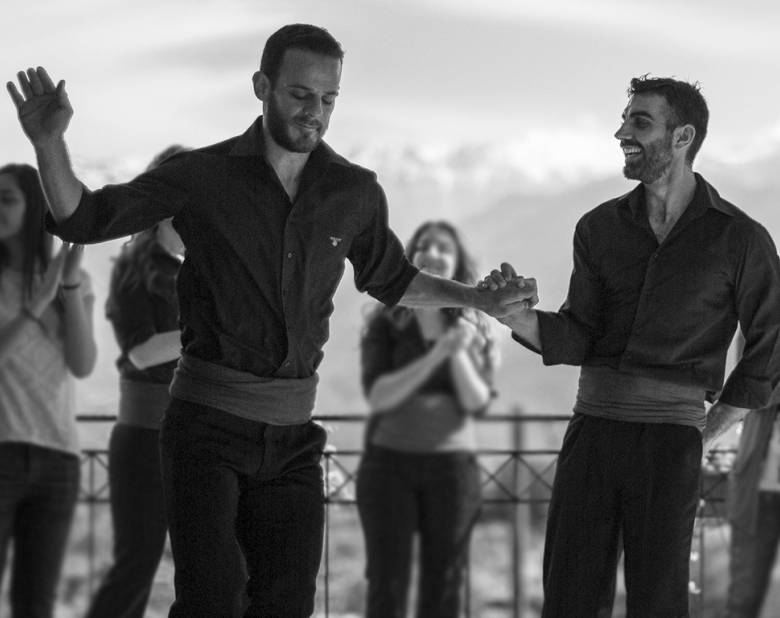The Musical Tradition of Crete

During feasts and celebrations, locals and visitors get involved with the special musical culture of Crete. Cretan music is considered the most vibrant in Greece, because it not only it continues to evolve and incorporate creative contemporary musical features, but it also manages to express modern reality.
Improvisation is one of the characteristics of Cretan artists. Musicians are not limited to repeating basic melodies, but enrich their playing with improvisations that accompany dancers, who in turn spontaneously contrive new moves.
Mantinades, small poems, reflect the emotions of Cretans and express sorrow, love and any feeling that arises from the sensitive Cretan soul. One of the most impressive “scenes”during a typical Cretan feat, is when two or more improvisers exchange mantinades for hours.
The Cretan Lyre
The basic instrument of Cretan music, the Cretan lyre, first made its appearance in the 17th century, while playing the lyre became popular in the 18th century. Of course, the initial shape of the instrument was slightly different from that of the modern lyre, which was designed in 1940 by Manolis Stagakis from Rethymno. The lyre, which is in the shape of a pear, used to be accompanied by the “boulgari” and later by the “laouto”, the lute, which is still used today.
Both the sound and shape of the Cretan lyre and the traditional songs were improved after World War II; undoubtedly the lyre players of Rethymno played an important role in this development. During that period Kostas Mountakis and Thanassis Skordalos, both from Rethymno, contributed to the international recognition of the traditional Cretan music in the following decades. Other skilled artists like Manolis Lagos, Andreas Rodinos and Stelios Foustalieris helped to establish the traditional Cretan music.
Other musical instruments
The basic instrument of Cretan music, the Cretan lyre, first made its appearance in the 17th century, while playing the lyre became popular in the 18th century. Of course, the initial shape of the instrument was slightly different from that of the modern lyre, which was designed in 1940 by Manolis Stagakis from Rethymno. The lyre, which is in the shape of a pear, used to be accompanied by the “boulgari” and later by the “laouto”, the lute, which is still used today.
Both the sound and shape of the Cretan lyre and the traditional songs were improved after World War II; undoubtedly the lyre players of Rethymno played an important role in this development. During that period Kostas Mountakis and Thanassis Skordalos, both from Rethymno, contributed to the international recognition of the traditional Cretan music in the following decades. Other skilled artists like Manolis Lagos, Andreas Rodinos and Stelios Foustalieris helped to establish the traditional Cretan music.
